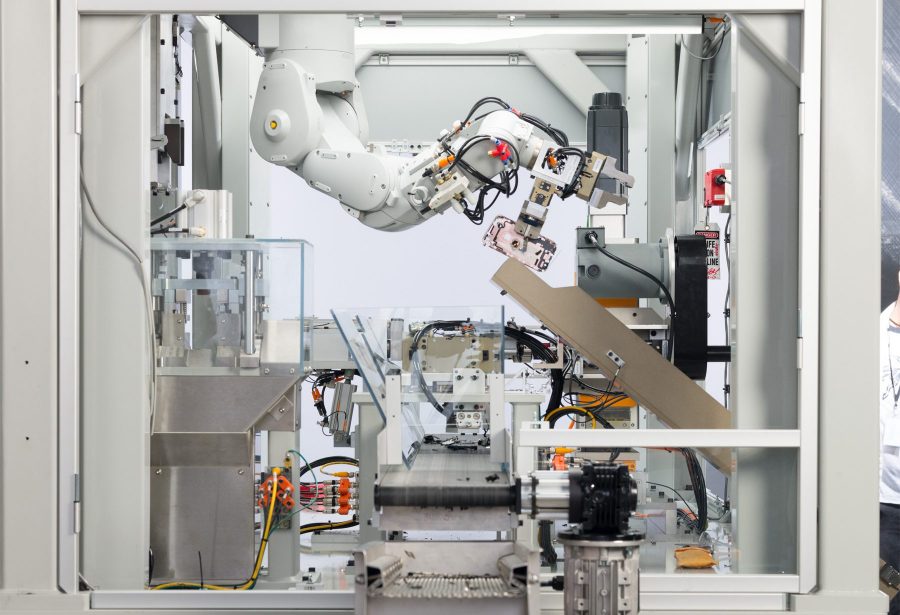
Photo by Apple
Apple Introduces New iPhone Disassembly Robot and Recycling Program
An article in the Austin American-Statesman looks at Daisy, a new robotic iPhone disassembly system that can take apart 200 iPhones per hour. That’s actually slower than Daisy’s predecessor, Liam (see“Apple Releases 10th Annual Environmental Responsibility Report,” 21 April 2017), but Liam could disassemble only the iPhone 6, whereas Daisy works with the iPhone 5 through the iPhone 7 Plus. Daisy also lets Apple harvest aluminum at a high-enough grade that the company can reuse the metal directly in its own products.
Apple has also announced a new recycling program called GiveBack, which aims to make trading in a device a more streamlined process. For each Apple device accepted through 30 April 2018, Apple will make a donation to Conservation International. So if you have any dead devices gathering dust in a drawer, send them back to Apple!
If only their recycle program worked as well when it came to outside. My experience was:
I’m with Greenpeace on this one. Instead of showing off robots that allow disassembling damaged iPhones without workers, Apple would rather focus on repairability of their devices and replicability of parts. Designing light and nice things is a lot easier if you assume people will just toss em out after a few months. Designing those same lightweight svelte gadgets with longevity in mind demonstrates some real skill. Of course that’s also a business issue. So I guess we’ll see how much of Apple’s green talk leads to action, and how much of that is just talk.
I philosophically agree with the concept of repairability and upgradability, but I just can’t see how it can happen with mobile devices while advancing the state of the art in terms of performance, capabilities, and size.
You can only really repair and upgrade a piece of technology effectively if there’s a lot of extra room in the case.
In the US your best bet is to take older phones to a 3rd party.
You may get the same amount but the paperwork is less.
People value size and bulk over repairabiloity. Greepeace can (and of course will) whine about it as they try to get their name into the press so they can get more money so they can whine more, but the facts aren’t going to change.
Greenpeace, unlike some organizations, goes to great lengths to mention high-profile companies, often ignoring much worse companies, because their primary motivation is generating donations.
I lost all respect for them when they first pulled this with Apple, calling out Apple in the headlines for a report that clearerly showed Apple was better than the other companies in the report,. But saying "Dell sucks at being green”woudln’t have gotten the same headlines. I haven’t given them a dime since.
So, I am highly suspicious of anything Greenpeace says or does as they’ve proven themselves duplicitous.